Making coconut rice with coconut cream is a delightful way to infuse the dish with rich coconut flavor. Here's a simple and easy recipe for coconut rice that can be prepared in 25 minutes, making it a perfect recipe for a busy weeknight meal. And if you're feeling adventurous, save this for the weekend, as it pairs well with my Grilled Huli Huli Chicken or Filipino BBQ recipe.
And if you love making fried rice, be sure to check out my recipes for these fan-favorites:
Wondering what to do with leftover fried rice? Here are creative ideas for what to make with leftover fried rice.
Jump to:
What Is Coconut Rice
Embracing the essence of tropical flavors, coconut rice stands as a delightful testament to the fusion of simplicity and richness in a single dish. Originating from diverse corners of the world, this aromatic delicacy finds its roots in various cultures, each infusing its unique touch to a coconut cream and fragrant rice base.
The allure of coconut rice lies not only in its creamy texture but also in its versatility. From the bustling streets of Southeast Asia to the vibrant kitchens of the Caribbean, this dish holds a cherished place as a staple or a luxurious accompaniment to various meals.
Whether you seek a side dish to complement a hearty curry, or grilled chicken, or desire a standalone culinary masterpiece, join us on this flavorful journey to unlock the secrets behind crafting the perfect coconut-infused rice.
Ingredients
- Oil: Coconut oil or olive oil
- Rice: I use long-grain Jasmine Rice. Feel free to use other varieties of rice listed below.
- Water: Use plain tap or coconut water (for a more coconut flavor).
- Coconut Cream
- Salt
- Optional: toasted coconut flakes, cilantro, or parsley
Please refer to the recipe card below for exact measurements to make Coconut Rice.
Instructions
- Rinse the rice: Place the rice in a fine-mesh strainer and rinse it under cold water until the water runs clear. This removes excess starch, making the rice fluffier.
- Prepare the rice: Heat the coconut or olive oil over medium heat in a saucepan or pot. Add the rinsed rice and sauté it for about 2-3 minutes, stirring frequently, until it becomes slightly translucent.
- Add liquids: Pour in the water, coconut cream, and salt. If you're using shredded coconut flakes, add them now for extra texture and flavor. Stir well to combine.
- Cook the rice: Bring the mixture to a gentle boil. Once it boils, reduce the heat to low, cover the pot with a lid, and let it simmer for 15-20 minutes. Check the rice occasionally to ensure it does not stick to the bottom of the pot.
- Let it rest: Once the rice has absorbed the liquid and is tender, remove the pot from heat but keep it covered. Let the rice steam and finish cooking in its residual heat for an additional 5- 10 minutes.
- Fluff and serve: After resting, use a fork to fluff the rice gently. Serve the rice in a large bowl, garnish with fresh herbs if desired, and serve hot.
How To Cook Coconut Rice Using a Rice Cooker
- Rinse the rice: Place the rice in a fine-mesh strainer and rinse it under cool water until the water runs clear. This removes excess starch, making the rice fluffier.
- Combine ingredients: In the rice cooker pot, add the rinsed rice, water, coconut milk or cream, coconut oil, salt, and any optional ingredients like shredded coconut or spices. Stir gently to combine all the ingredients.
- Cooking: Close the rice cooker lid and select the regular cooking setting. The rice cooker will automatically cook the rice and switch to "warm" when done.
- Resting: Once the rice cooker switches to "warm" mode, let the rice sit for 10-15 minutes. This allows the rice to steam and absorb moisture for optimal texture.
- Fluff and serve: After resting, use a rice paddle or fork to fluff the rice gently. Serve it hot as a delicious side dish or accompaniment to your favorite curry or main course.
The cooking time might vary slightly depending on your rice cooker model. It’s also good to check the manufacturer's instructions for specific guidelines on cooking rice with coconut milk or cream in your rice cooker.
Varieties Of Rice To Use
When making coconut rice, choosing the right rice can significantly impact the dish's texture and overall taste. Here are some common types of rice that work well for coconut rice:
- Long-grain white rice: This is the most commonly used rice for coconut rice. It remains separate and fluffy when cooked, blending the coconut flavors beautifully.
- Basmati rice: Known for its fragrant aroma and long, slender grains, basmati rice can elevate coconut rice with its aromatic qualities.
- Long Grain Jasmine rice: Another aromatic rice variety, jasmine rice has a slightly sticky texture when cooked, making it ideal for absorbing the flavors of coconut.
- Sticky rice or glutinous rice: Despite the name, this rice becomes sticky when cooked. It's commonly used in Asian cuisine and can create a creamier texture when combined with coconut cream.
- Arborio rice: Often used in risottos, arborio rice is a short-grain rice that, when cooked, releases starch, creating a creamy texture that could pair well with coconut cream.
Choose the rice variety based on the texture and flavor you prefer. Long-grain varieties keep the grains separate, while shorter-grain types might yield a creamier consistency. Additionally, rinsing the rice before cooking can affect the final texture by removing excess starch.
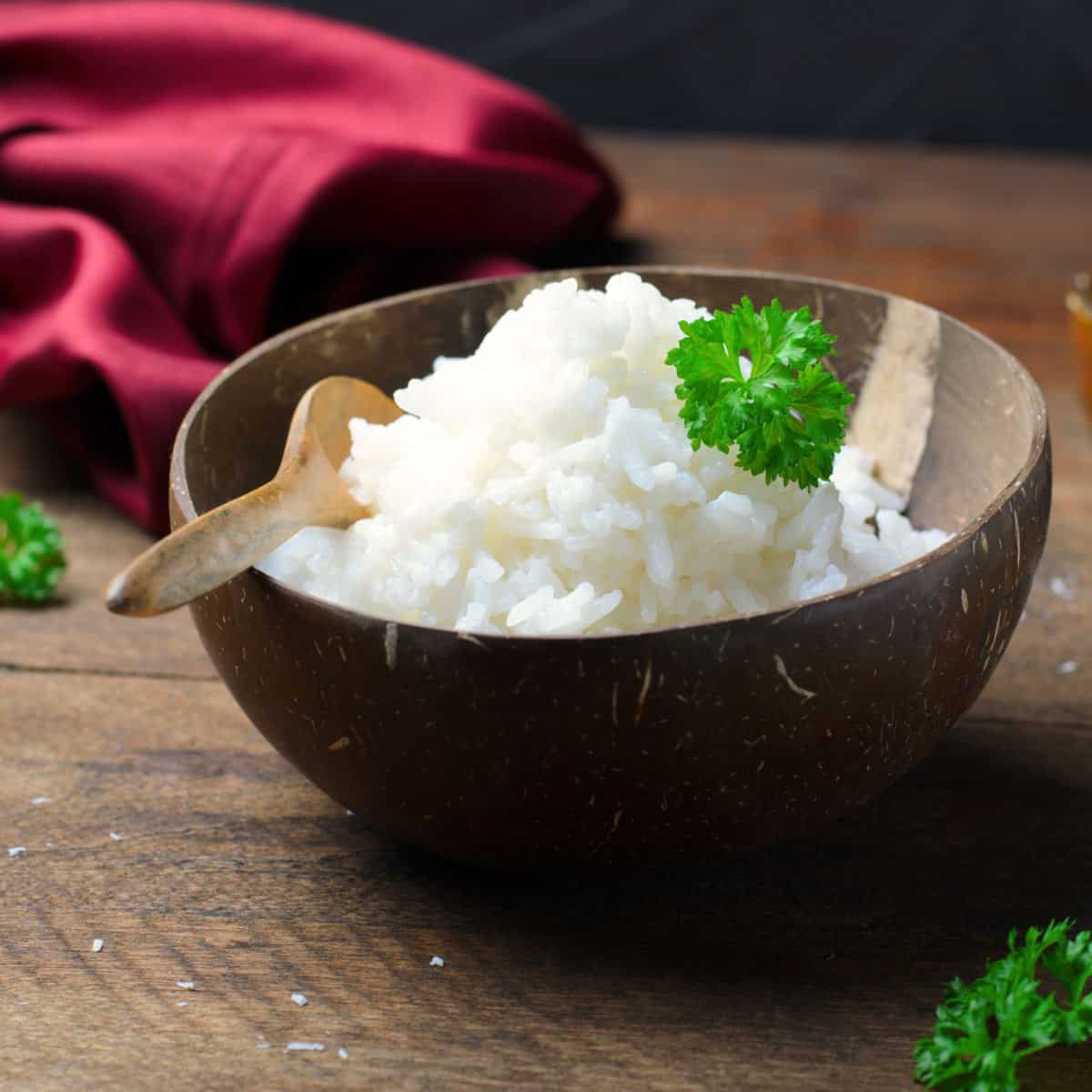
Substitutions
If you're looking to make coconut rice but don't have coconut cream on hand or want to explore alternatives, here are some substitutions:
- Coconut Milk: Substitute coconut cream with coconut milk. While coconut cream is thicker and richer, coconut milk works well in coconut rice. Adjust the quantity to achieve the desired creaminess and richness.
- Regular Milk or Cream: You can substitute regular milk or even heavy cream for coconut cream in a pinch. Keep in mind that this will significantly alter the flavor profile, but it can still produce a creamy rice dish.
- Yogurt or Sour Cream: You can use plain yogurt or sour cream for a tangier twist. Mix it with a bit of water to reach a similar consistency to coconut cream before adding it to the rice.
- Nut Milk: Almond, cashew, or other nut-based milk can be a dairy-free alternative. While the flavor will be different from coconut, it can still provide creaminess.
- Blended Tofu: Silken tofu blended with water until smooth can create a creamy texture similar to coconut cream. It won't have the coconut flavor, but it adds richness.
- Vegetable or Chicken Broth: Using broth instead of coconut cream will result in a savory rice dish rather than a coconut-flavored one. However, it can still create deliciously seasoned rice.
Remember that these substitutions will alter the taste and texture of the dish. It's a good idea to adjust other flavors, such as adding more spices or seasonings, to compensate for the change in the primary flavor profile. Experimenting with different substitutions can lead to unique and tasty variations of coconut rice tailored to your preferences or dietary needs.
Variations
You can explore several delightful variations when making coconut rice with coconut cream. Here are a few:
- Fruity Twist: Introduce a burst of sweetness by adding diced pineapple, mango, or raisins to the rice while cooking. The combination of coconut and fruit creates a tropical medley of flavors.
- Spiced Infusion: Incorporate whole spices like cinnamon, cloves, or cardamom into the rice as it cooks to infuse warm, aromatic notes. You can also add a dash of turmeric for a vibrant yellow hue and subtle earthy flavor.
- Nutty Enhancement: Toasted nuts like cashew nuts, almonds, or shredded coconut can be sprinkled over the rice before serving, providing a satisfying crunch and a depth of nutty flavor.
- Herbal Elevation: Fresh herbs like cilantro, basil, or lemongrass can be finely chopped and added to the rice for a refreshing herbal twist. Alternatively, add a few lime leaves while cooking for a citrusy essence.
- Protein-Packed: Mix in cooked shredded chicken, shrimp, or tofu for a more substantial meal. Sauté the protein separately with spices before adding it to the coconut rice.
- Vegetarian/Vegan Options: Incorporate veggies like peas, bell peppers, carrots, or spinach to enhance the dish's nutritional profile and add vibrant colors.
- Coconut Milk Blend: Combine coconut cream with coconut milk for a lighter version of the rice. Adjust the ratio based on your preference for richness.
- Curry Fusion: Integrate a spoonful of your favorite curry paste or powder while cooking the rice for a spicy, aromatic twist that pairs perfectly with coconut cream.
Storage and Reheating
To store coconut rice made with coconut cream properly:
- Cooling Down: Allow the coconut rice to cool to room temperature before storing it. Leaving it out at room temperature for too long can encourage bacterial growth, so try to refrigerate it within 2 hours of cooking.
- Air-Tight Containers: Place the coconut rice in an airtight container. This helps prevent moisture loss and keeps the rice from absorbing other odors in the refrigerator.
- Refrigeration: Coconut rice can be stored in the refrigerator for up to 3-4 days. Ensure the refrigerator temperature is below 40°F (4°C) to maintain food safety.
- Avoid Freezing: Coconut rice made with coconut cream might not freeze well due to the creamy texture. Freezing can sometimes alter the texture and cause it to become grainy or separate when thawed. If you do freeze it, the texture might change upon reheating.
- Reheating: To reheat, add a splash of water or coconut milk to the rice before microwaving or reheating on the stove. This helps restore moisture and prevents the rice from becoming dry.
- Safety Consideration: When reheating, ensure the rice reaches an internal temperature of at least 165°F (74°C) to kill any potential bacteria.
Always use your best judgment when consuming stored rice. If it looks or smells off or you are uncertain about its safety, discard it to avoid the risk of foodborne illness.
Top Tips
- For more aromatic rice, consider adding a few ginger or pandan leaf slices while cooking.
- You can adjust the consistency by adding more or less coconut cream/milk according to your preference.
- If using canned coconut cream, shake or stir well before measuring, as it can separate in the can.
- Avoid stirring the rice too much during cooking to prevent it from becoming sticky.
Enjoy your flavorful coconut rice as a side dish or with your favorite curry or grilled meats!
FAQ
Here are some frequently asked questions (FAQs) about coconut rice, along with their answers:
Yes, you can use coconut milk instead of coconut cream. Coconut milk is slightly thinner than coconut cream, but it still provides a rich coconut flavor to the rice. Adjust the quantity based on your desired level of creaminess.
Absolutely! Coconut rice is versatile; you can add various spices such as cinnamon, cardamom, or turmeric to infuse different flavors. Additionally, you can incorporate fruits, nuts, or fresh herbs for added taste and texture.
Long-grain rice, such as basmati or jasmine rice, is commonly used for coconut rice because it can remain fluffy and separate when cooked. However, some prefer using sticky or glutinous rice for a creamier texture.
Coconut rice can be sweet and savory, depending on the ingredients and spices used in the recipe. It can lean towards a slightly sweet side if fruits or a small amount of sugar are added, but it can also be made savory by incorporating savory spices or serving it with savory dishes.
If you want to avoid dairy and coconut, you can try making rice with other non-dairy creamy alternatives like blended tofu, nut milk, or a combination of blended cashews or almonds with water for a creamy texture.
Yes, you can make coconut rice using brown rice! While traditional coconut rice recipes often use white rice for its fluffiness, you can substitute brown rice for a healthier, nuttier version. However, cooking coconut brown rice may require a few adjustments due to the differences in cooking times and liquid absorption between brown and white rice.
Other Rice Recipes
Looking for other quick and easy rice recipes? Try these:
Perfect Pairings
These are my favorite dishes to serve with Coconut Rice:
📖 Recipe
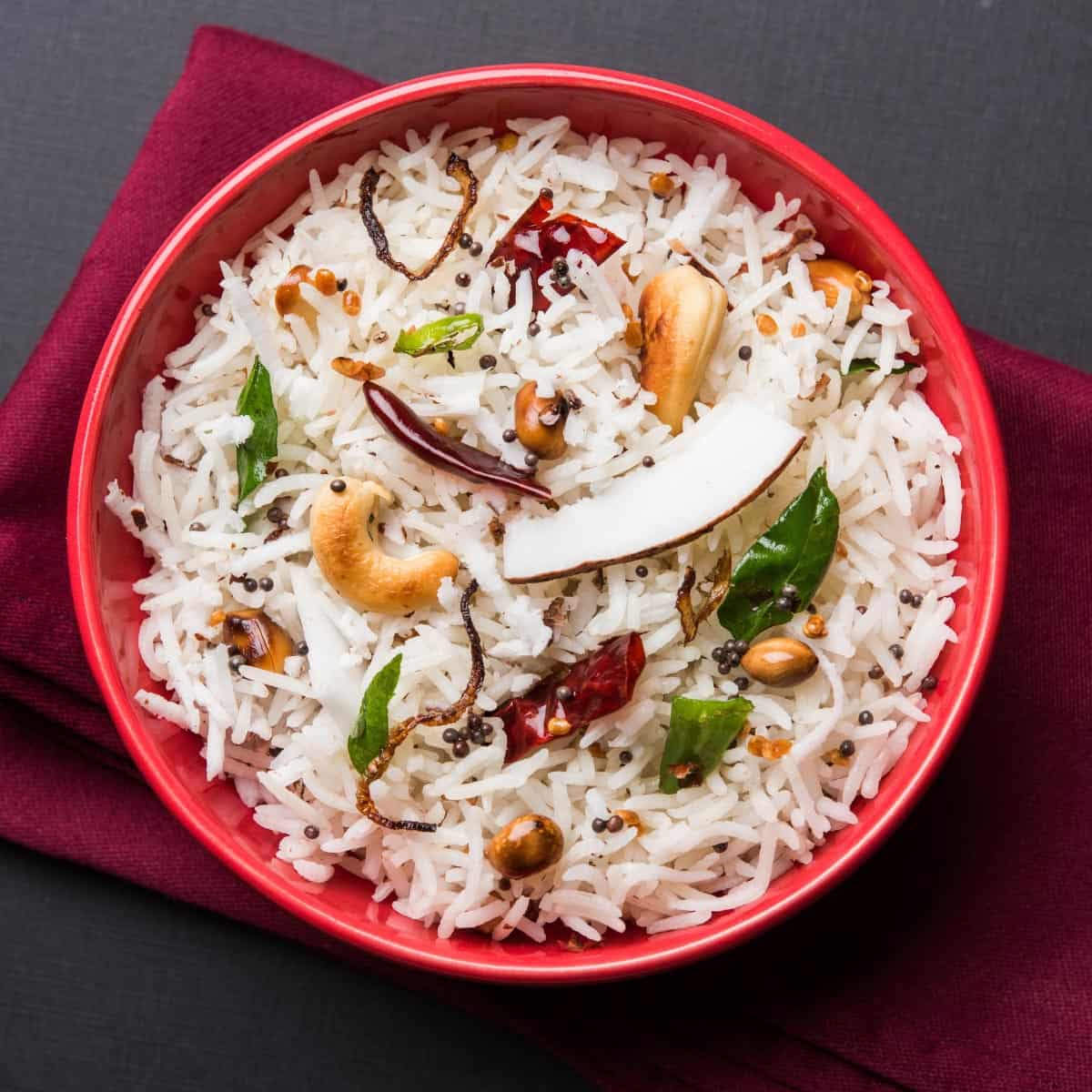
Ingredients
- 1 cup Long-grain white rice
- 1 ½ cups Water
- 1 cup Coconut Cream Coconut Milk for a lighter version
- 1 tablespoon Oil Coconut or Olive Oil
- 1 teaspoon Salt adjust to taste
- ¼ cup Coconut Flakes Optional
- Cilantro, Parsley, Cashew Nuts Optional (garnish)
Instructions
- Place the rice in a fine-mesh strainer and rinse it under cold water until the water runs clear. This removes excess starch, making the rice fluffier.1 cup Long-grain white rice
- Heat the coconut or olive oil over medium heat in a saucepan or pot. Add the rinsed rice and sauté it for about 2-3 minutes, stirring frequently, until it becomes slightly translucent.1 tablespoon Oil
- Pour in the water, coconut cream, and salt. If you're using shredded coconut flakes, add them now for extra texture and flavor. Stir well to combine.1 ½ cups Water, 1 cup Coconut Cream, 1 teaspoon Salt
- Bring the mixture to a gentle boil. Once it boils, reduce the heat to low, cover the pot with a lid, and let it simmer for 15-20 minutes. Check the rice occasionally to ensure it does not stick to the bottom of the pot.
- Once the rice has absorbed the liquid and is tender, remove the pot from heat but keep it covered. Let the rice steam and finish cooking in its residual heat for an additional 5- 10 minutes.
- After resting, use a fork to fluff the rice gently. Serve the rice in a large bowl, garnish with fresh herbs if desired, and serve hot.¼ cup Coconut Flakes, Cilantro, Parsley, Cashew Nuts
Notes
- Choose the rice variety based on the texture and flavor you prefer.
- Long-grain varieties separate the grains, while shorter-grain varieties might yield a creamier consistency.
- Rinsing the rice before cooking can affect the final texture by removing excess starch.
- For more aromatic rice, consider adding a few ginger or pandan leaf slices while cooking.
- You can adjust the consistency by adding more or less coconut cream/milk according to your preference.
- If using canned coconut cream, shake or stir well before measuring, as it can separate in the can.
- Avoid stirring the rice too much during cooking to prevent it from becoming sticky.



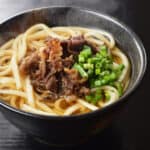

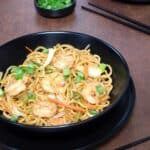







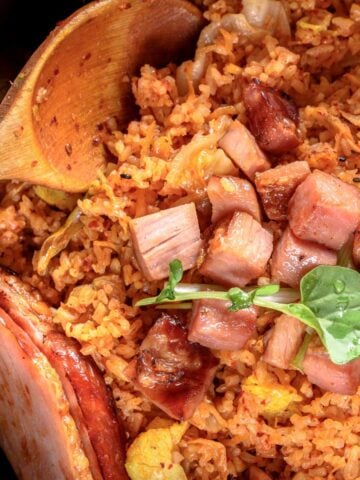
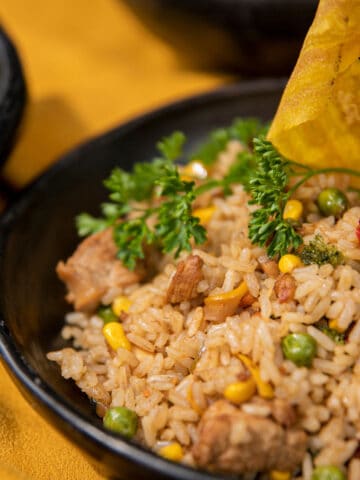
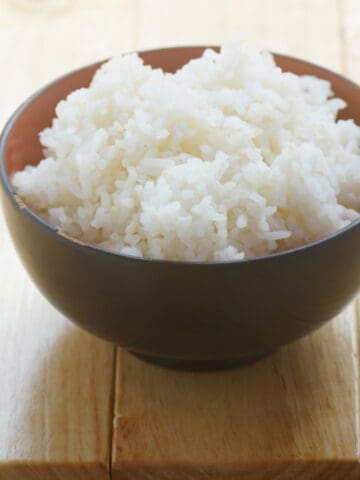
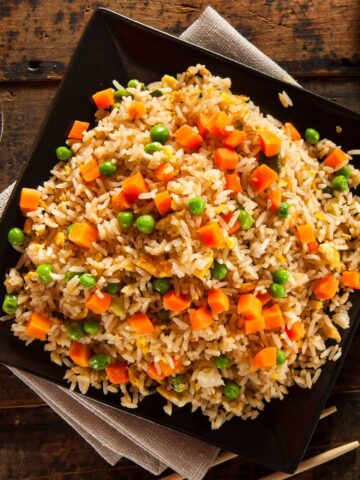
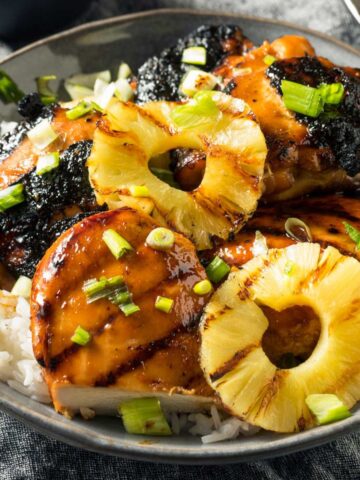
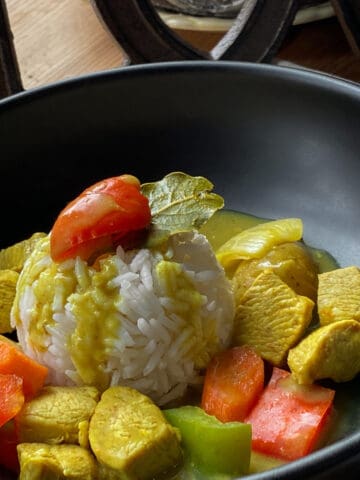
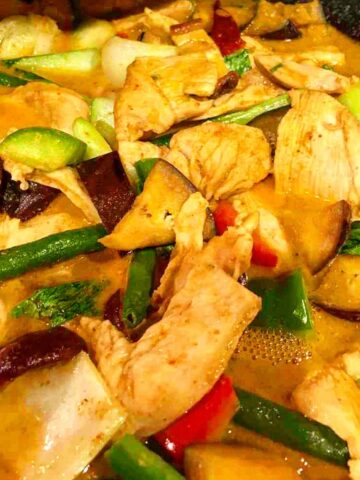
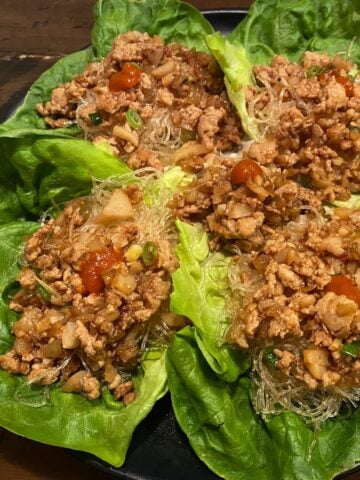

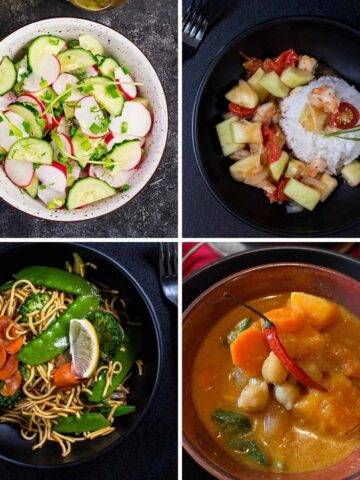
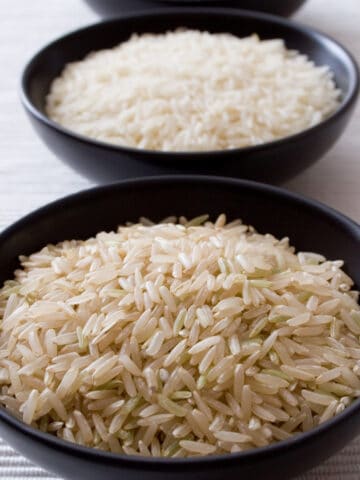
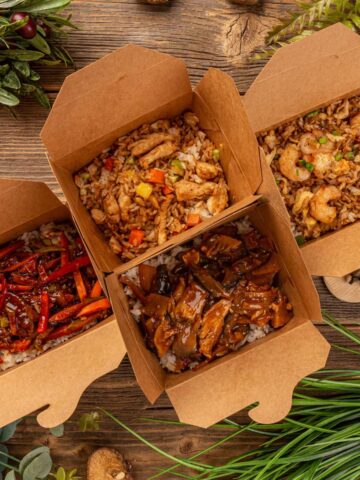

Comments
No Comments